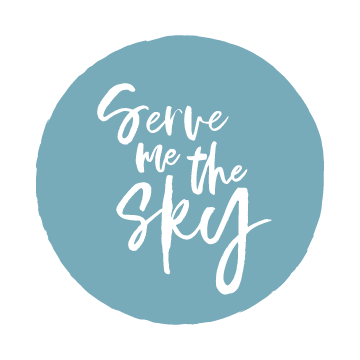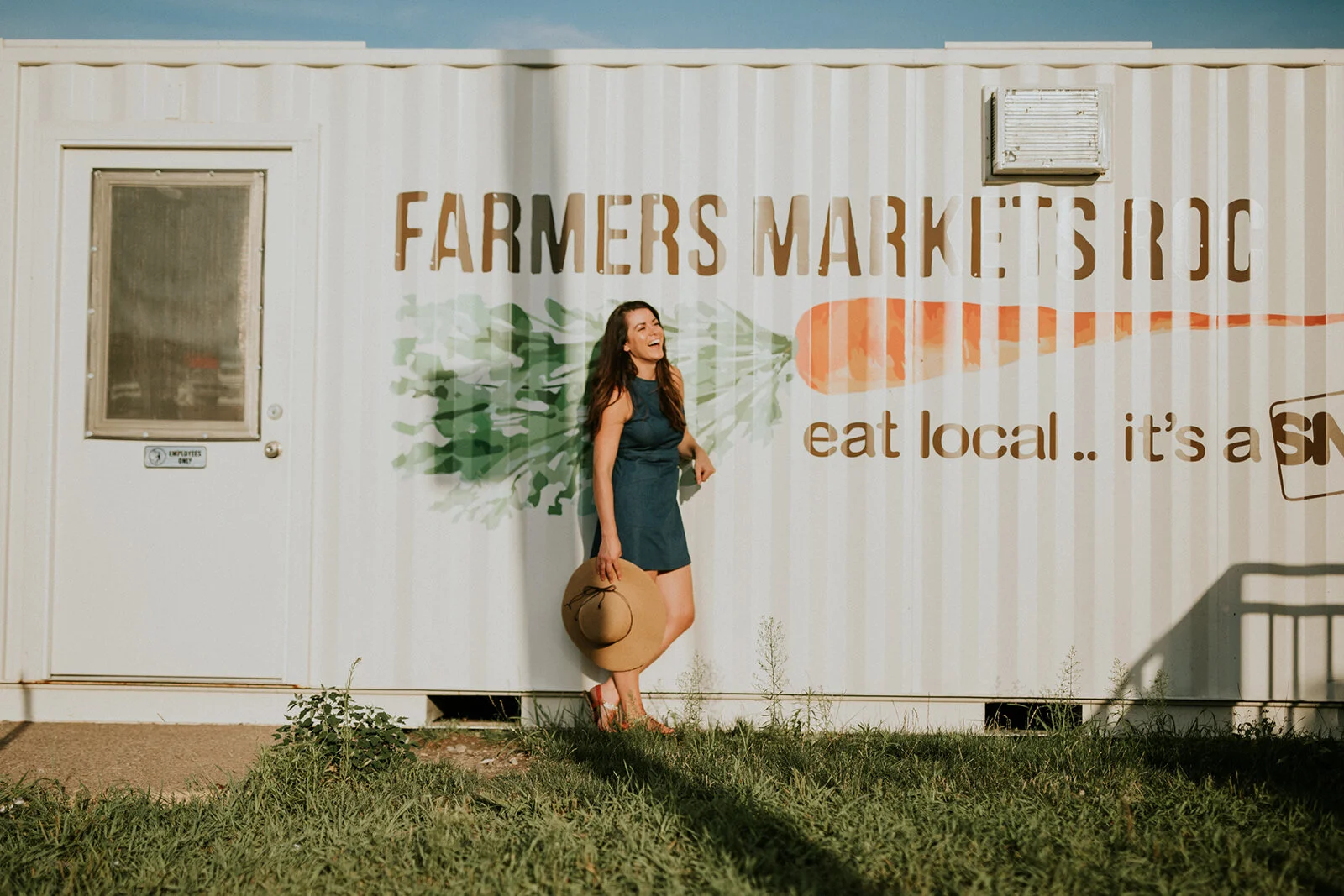A Conversation with Stephanie Hanna: Demystifying Sponsored Posts
/Meet Stephanie Hanna, the force behind @sipandsavourroc
This is the fourth post in the “A Conversation With” series, where I interview talented folks about their areas of expertise, whether that’s social media, marketing, or communications. You can read past entries in the series here.
This month, I interviewed Stephanie Hanna, the content creator behind Sip and Savour Rochester. We talked about everything that goes into creating content, partnering with brands, and crafting a great sponsored post. I hope you learn something new!
Tell me about the concept for Sip and Savour Rochester.
Food means a lot to me; so many of our connections and memories are associated with food. One of the big things for me with Sip and Savour Roc is showcasing who is back there in the kitchen cooking the food. I didn’t see a lot of chefs being featured on social media before, so that’s something I wanted to focus on. Chefs lately have seen such a change in the Rochester area, where they’re actually being celebrated. Through Sip and Savour Roc, I’ve been able to connect with people on many different levels, building community, raising awareness, developing relationships with restaurants, and showcasing shops.
Was there a moment when you knew you were an influencer?
I actually don’t like the term “influencer” because it has a negative connotation. I’m a content creator; I build relationships with people.
I’ve been working on Sip and Savour Roc for about four and a half years; it was about two years ago that I started feeling more confident. I’ve built relationships with chefs, solidified those relationships, and improved my photography. That’s made me feel more comfortable in approaching brands about collaborations.
How did you get started with sponsored partnerships? What was your first sponsored post?
My first one was scary! No one was talking about how sponsored posts worked. A friend of mine was also a mentor to me and said “I’m confident in what you’re doing. Take a look at what you’re bringing to the table- the time spent and how you can help showcase this brand. You are worth it.” That hit me. Moving forward, I proposed a price to them. I was really nervous. They said yes! Practice really helps, too. Now I’m super comfortable; I have a proposal layout and a media kit. I feel very confident in what I’m bringing to the table and how I can help the brand fulfill their goals.
Do you usually pitch a sponsorship to a business, or do they approach you?
It’s a mix of both. I have a running list of ideas and I’ll ask myself, “How can I bring awareness to this?” Then I reach out.
Do you have a target amount of sponsorships you aim to do each month or year?
No, I do what feels right. By day, I’m a special education teacher, so my work with Sip and Savour Roc is supplemental income. You don’t want to force anything; your audience can tell if it’s not authentic. At first, you might feel like you have to say yes to everything. You can get caught up in worrying “What if someone else gets it?” But it’s okay to celebrate other people. I’ll recommend other content creators if it’s not a good fit for me.
What makes an enticing partnership? How do you decide if you’re going to say yes or no to a sponsored deal?
I evaluate what the brand’s message is to see if I can get behind it 100%. If I can’t, then it’s not going to work. I need to respect what the brand brings to the table and vice versa. You also need to think about the content you want to put out and what you enjoy. I want to put out content I’m genuinely excited about!
What other factors do you take into consideration when working with brands?
Timing is one thing- I always ask if they’re reaching out to other people as well. I’d rather be original and creative and not have my content look the same as someone else’s.
Do you ever do partnerships that are unpaid?
Having Sip and Savour Roc not be my main source of income makes me a little more flexible in accepting some collaborations that are not paid. For awhile, lots of businesses would give you something for free, like a meal or tickets, and expect you to take photos and share. I appreciate that, because it means I’m being recognized as an account that shares great content, but you also need to draw that line of what you’re willing to do. It was a big conversation among many creators in the area. If you’re providing your post, Instagram Stories, and photography in exchange for only a free meal, it doesn’t help grow your business and it does a disservice to the broader community of content creators.
How do you disclose a sponsored post to your audience?
According to FTC guidelines, content creators are required to write the word “ad” or “sponsored” in the caption. Sometimes I see people hide it in the comments on the post, and that is not compliant with FTC guidelines. You can have it as the first or last word in the post, or as the first hashtag, but hiding it is not okay. Your audience needs to understand that you’re being paid for something.
This post, sponsored by Wegmans, clearly denotes that it’s a paid sponsorship.
Do you ever worry your audience will be turned off by a sponsored post?
I haven’t found that people are bothered by it. I would never share something that I don’t believe in. I did an Instagram Stories series explaining what it means to do a sponsored post, and people crave that honesty.
What is your favorite brand partnership you’ve done? Why?
I did a series with the New York Beef Council that made me go outside my comfort zone a little bit. I had to choose three restaurants that prepared beef in a way that wasn’t typical, so I went to McCann’s, Farmer’s Creekside Tavern & Inn, and Avinno; I tried beef tongue tacos, a beef heart sandwich, fried bologna, and tripe! They were all great. I was able to share these businesses doing cool things with beef in different ways and encourage people to try something new. I appreciate doing a series versus a single post; you’re developing a relationship with the brand and showing it to your audience. It’s more worthwhile than a single post.
A post featuring McCann’s Meats, sponsored by the NY Beef Council
What kinds of analytics do you provide to the business after the post goes live?
Some brands never ask for stats, some want screenshots of your reach, comments, and saves. They’re mostly focused on your engagement level. That’s changed- the focus used to be on likes. By the end of 2020, likes are going away, so it’s really not about the number of likes. If you’re investing in how many people are clicking the heart button, you’re not focusing on the right avenue. 100 likes with 60 comments is huge for a business! It tells them that people are spending time on the post, commenting, and are more likely to go visit that business rather than those who just like and keep scrolling.
From your experience, what are brands looking for when they seek out an influencer?
Engagement is the main thing. When I start a conversation with a brand, I send them my media kit. That includes photos, engagement stats, brand partnerships I’ve done in the past, and an explanation of who my audience is.
You mentioned your audience- how do you get a good sense for who your audience is?
Being responsive is really important. If I remember what someone has reached out to me about before, I’ll take the time to message them if I see something that makes me think of them. For example, “Hey so and so! I remember you mentioned X before, so I thought you’d like to see this!” You’re doing it because you want to and because you’re building relationships, not because you want that person to like your photo. There’s a big difference.
What is one thing you wish businesses knew about working with content creators?
Understanding the time commitment and how much goes into a post. The drive to and from the destination, styling, photography, writing the caption, sharing the post, and engaging in the comments section- that’s all time you’re not spending on something else. Also, it’s important to remember that it’s a working relationship. My goal is to help the business, not take something from the business. We’re working together to showcase whatever the end result might be.
An example of how Stef tries to be transparent about the work that goes into content creation.
So to sum it all up, what makes a great sponsored post?
The top factor is authenticity. People need to understand that you’re all in; they can feel it when you’re not. The photography and the voice are big parts of it too. What’s the message you’re communicating? How can you get it across in a way that doesn’t sound like you’re selling something? Yes, you’re selling a product or brand, but you don’t want to come off as a saleswoman. Finding that creative piece is the exciting part for me! I always think about my strengths and aim to be original in how I showcase the location, food, or event.
Looking for more insightful social media content? Sign up for my unboring email newsletter!






